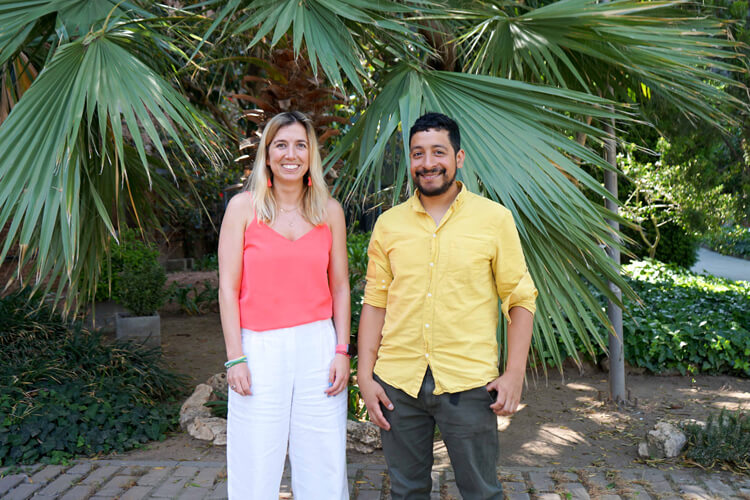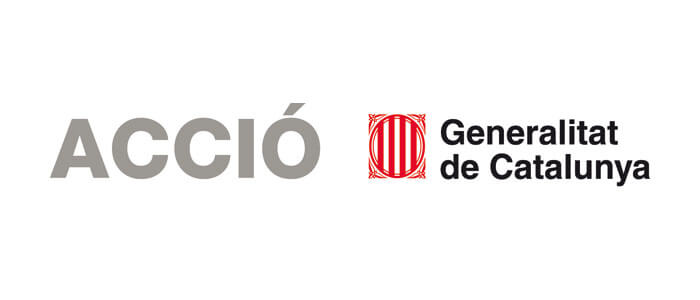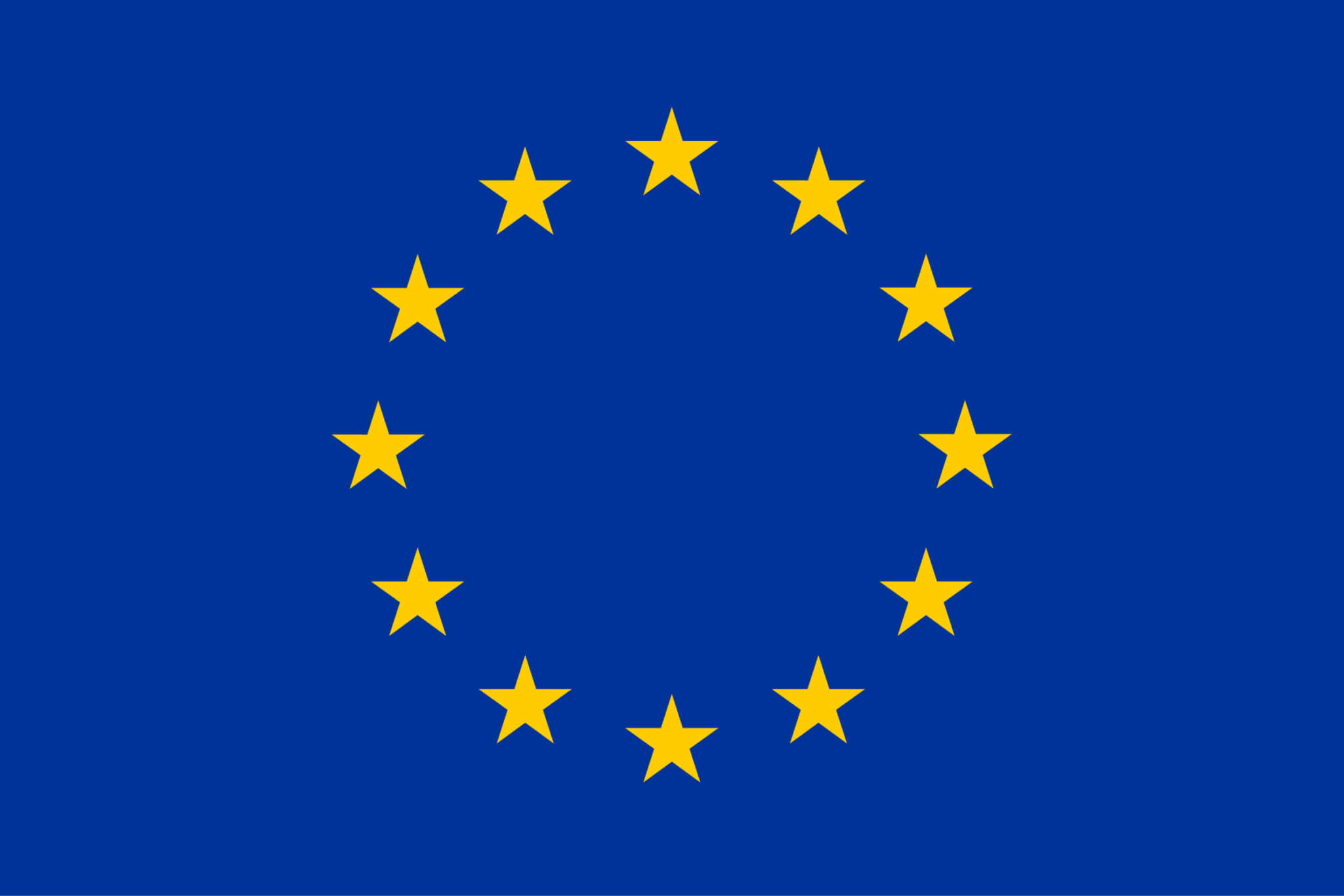Interview with Dr José Rodrigo Magaña and Dr Cristina Fornaguera

Nanoparticles are promising platforms for the development of diagnostic and therapeutic tools. In the Materials Engineering Group (GEMAT) at the IQS School of Engineering, the group of researchers led by Dr Cristina Fornaguera is working on using nanotransporters or polymer nanoparticles, built based on polymers that encapsulate genetic material (microRNA – miRNA), as cell growth regulators that can be used as future therapies in cancer treatments.
A new project, called ANTIEMT, has been added to this line of research. The main goal is to design and develop nanoparticles to treat cancerous metastasis via the inhibition of EMT, or Epithelial to Mesenchymal Transition. One of the important parts of the project lies in the materials engineering aspects, where the characterization of the polymer materials that form them is essential in order to achieve useful therapeutic systems. This is where Dr José Rodrigo Magaña, a post-doctoral researcher and an expert in polymer chemistry, is contributing his experience to the project and to the group.
Within the context of Dr José Rodrigo Magaña joining the ANTIEMT project, we are speaking with him and his supervisor, Dr Cristina Fornaguera.
Rodrigo, how did you end up at IQS for this post-doc?
I was born in El Salvador and I finished my university studies in Santiago de Compostela. I came to Barcelona with a grant to do a master’s degree and I stayed to do my PhD in the CSIC… and also to live! After my thesis, I was able to do a three-year post-doc in the Netherlands, at Eindhoven University of Technology.
I chose to come to IQS for several reasons. First, because I knew Cristina, who I had crossed paths with while doing my doctoral thesis at the CSIC. We already knew each other and knew how we worked with similar and overlapping ideas. We were brought up in science in the same way. Second, because until now I had worked on very fundamental aspects of science and I wanted to take a leap and seek out real applications for my research.
Your field of experience is in polymer chemistry, right?
We could say that, yes. My doctoral thesis addressed the study of certain molecules that self-structured when they became dissolved and I observed their interactions, which structures formed when they were aggregated, and whether it was possible to modify these structures. I’ve already mentioned that models and calculations were fundamental to everything, at most we came to an application of how to create some type of material with them.
During my post-doc in Eindhoven, I took another step forward and started working with polymers that fall more within industrial sectors.
Now you have chosen the GEMAT group to do a new post-doc with the ANTIEMT project, right?
Yes, because I was really attracted to Dr Fornaguera and Dr Borrós’s area of expertise within the CoviNanoVAx project, to create specific vaccines for COVID-19. Being able to work on these much more clinical aspects was a true challenge.
Now I’ve joined the ANTIEMT project and I’m working with genetic materials, which are still natural biopolymers in the end. When I spoke with Cristina, we decided to take on a project that was midway between her area of experience and my own. I had never worked with living systems, but in this project I am contributing my expertise to handle the polymers in solution, together with Cristina’s contribution through her knowledge about the therapies that could be interesting.
Cristina F. ANTIEMT is a project that addresses new therapeutic alternatives to avoid the epithelial to mesenchymal cell transition, a transition that ensures that tumours remain and keep progressing. It is even responsible for how metastases occur. What we are looking for are systems to release genetic material that avoid this: tumour metastasis and progression in general, trying to reach and kill tumour stem cells, the ones that are most resistant to chemotherapy and traditional therapies. But our target is lung cancer now, where the group has more experience, although we also collaborate on breast and colon cancer treatments. We’re lucky that our experience is in materials, and that’s why we can apply them in different therapeutic indications!
Rodrigo M. This would be the therapeutic part of the project. The chemistry part, where I can contribute my experience, involves the design of genetic material transporters so it can specifically target cancer stem cells. That’s the goal of the research. These transporters are invisible polymers for most body cells, except for these cells to which they are targeted “ninja” style.
Cristina F. These are the therapies that are needed most in cancer treatments. Our group has experience in the design of synthetic materials per se, but now we are diversifying to try to use natural vehicles – the famous extracellular vesicles. At the same time, we’re also developing a platform to obtain genetic material here at IQS.
What type of grant or funding have you earned for the project?
We have a grant from the ACCIÓ Tecniospring INDUSTRY programme, co-funded by the European Marie Skłodowska-Curie Actions programme. These grants are different from traditional Marie Curie grants because they are more oriented at helping new industrial applications to reach the market. To apply for the grant, we needed support from a company, and we achieved it here from Tractivus, an IQS startup with a certain interest in the use of our applications for one of their products.
Dr Cristina Fornaguera, what does Dr Rodrigo Magaña joining your group represent?
Clearly, it represents a before and an after! Adding Rodrigo has meant adding a right hand for me since he contributes all his expertise in polymer synthesis and preparation, as well as analysis and characterisation. We complement each other very well and we form an incredible partnership!
In addition, he has wholeheartedly joined the group, helping on all the projects and all the students working in the group.
What does a post-doctoral researcher contribute to an already established research group that essentially features doctoral students and professors?
A post-doctoral researcher represents a level of higher maturity. If we could, we would like to have many post-doctoral researchers! They have full autonomy to make decisions and they help move projects forward the most. Don’t you think Rodrigo?
Rodrigo M. I’d like to add that when I came here I joined a group that was already well structured. I’m learning a ton here! I feel like I have “landed” to reinforce a structure that was already doing very well. But I agree that we make an excellent partnership.
ANTIEMT features funding from the Horizon 2020 research and innovation programme of the European Union, under Marie Skłodowska-Curie subsidy agreement No. 801342 (Tecniospring INDUSTRY), as well as from ACCIÓ, the Government of Catalonia Trade & Investment Agency.
RELATED PEOPLE:
RESEARCH GROUP
Materials Engineering
Chemical & Synthetic Biology for Biotherapies
RELATED PROJECTS
AntiEMT (Nanopartículas con micro-ARN para inhibir celulas cancerosas mesenquimales)




